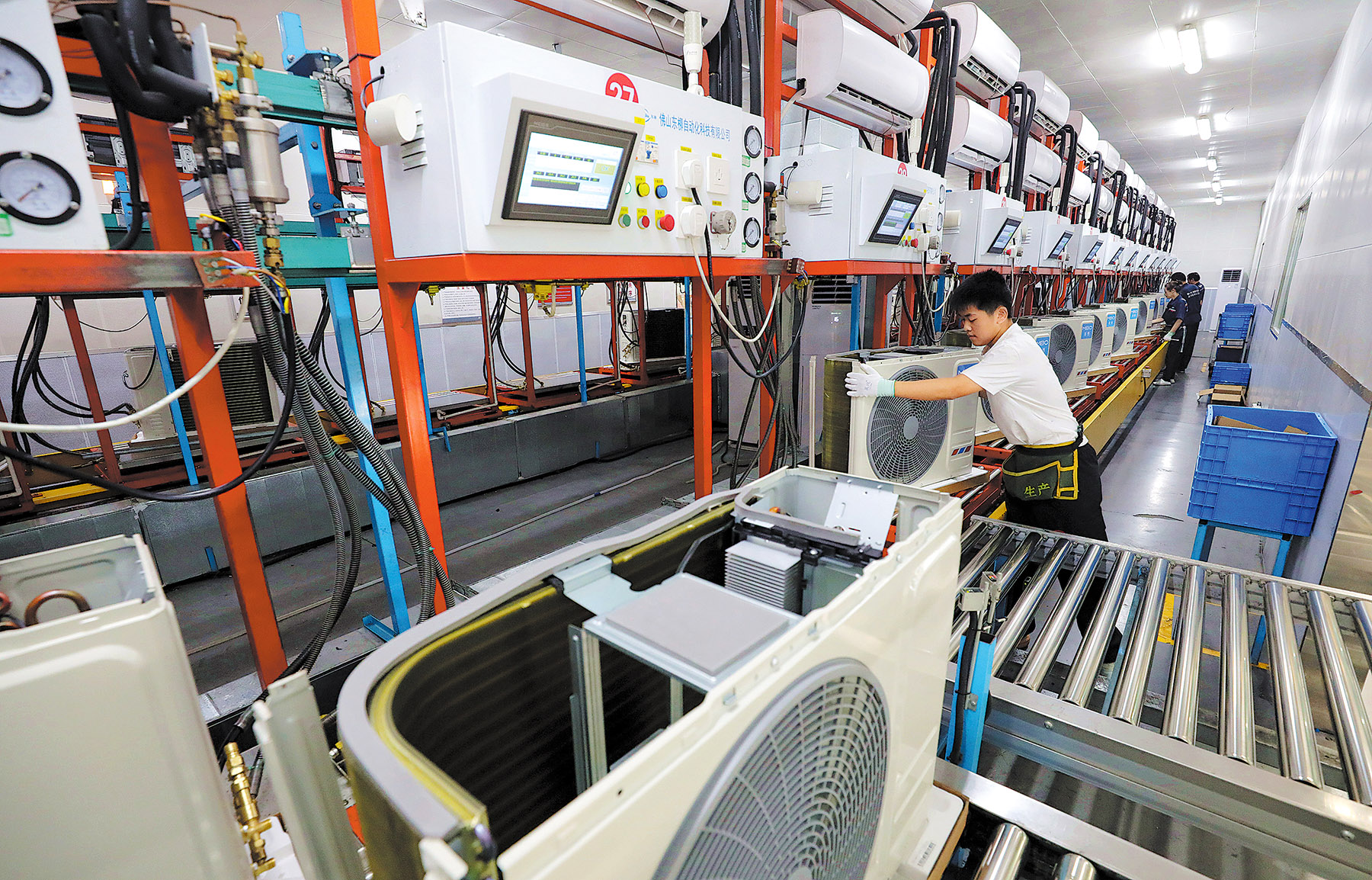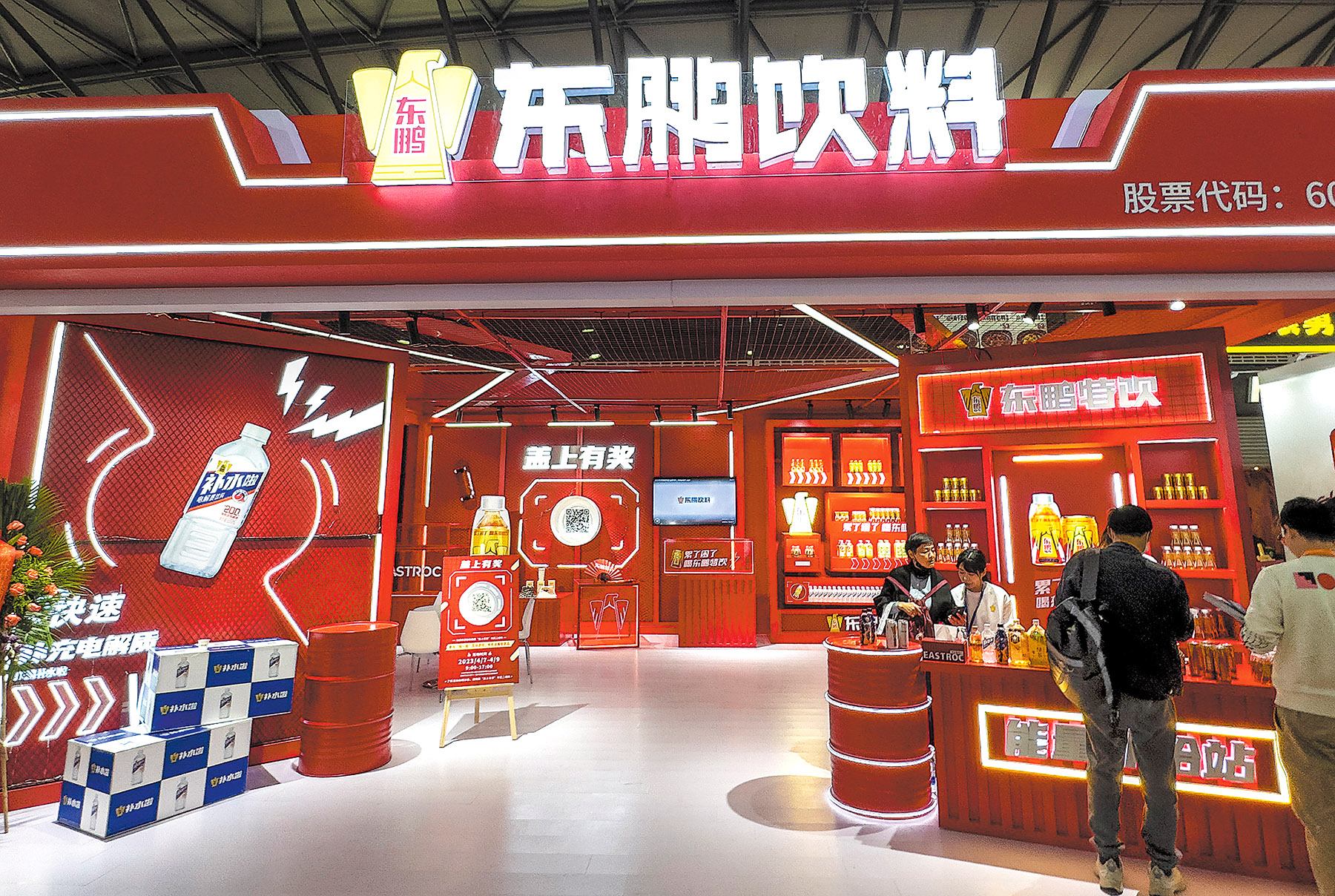Businesses meet soaring demand for ‘summer economy’ products as heat waves become more common

Inside the bustling workshop of Dongguan JHS Electrical Co Ltd, a manufacturer of mobile air conditioners and dehumidifiers in Dongguan, South China’s Guangdong province, the hum of machines filled the air as workers moved swiftly through the assembly line, fastening, inspecting, and packaging in early July.
A total of 458 portable air conditioners rolled off the production line, neatly boxed and ready for export to Mexico. As sweltering heat waves grip many regions around the world, China’s “summer economy” is gaining momentum, with domestic manufacturers racing to meet soaring overseas demand for cooling solutions.
With operations spanning more than 40 countries and regions, the Chinese company has established itself as a major player in the global cooling equipment market.
“Our portable air conditioners are independently developed, compact in size, energy-efficient, and offer strong cooling performance,” said Gao Yueping, the company’s chairman. “Compared with traditional wall-mounted units, they are more cost-effective to install and far more portable.”
Overseas demand has exceeded the company’s expectations this year. By the end of April, its orders for portable air conditioners had surged 10 percent year-on-year, data from Huangpu Customs showed.
With a new 80,000-square-meter factory becoming fully operational earlier this year, Dongguan JHS Electrical expects total orders in 2025 to exceed 2.3 million units, generating an estimated output value of 1.6 billion yuan ($223.02 million).
To cope with unilateral trade policies in the United States, Gao said, his company has expanded into new markets such as Southeast Asia, where demand, particularly in less urbanized areas, is rising steadily.
While production ramps up in southern China, activity in the eastern part of the country is just as intense.
Roughly 1,400 kilometers from Dongguan, an air conditioner factory owned by Trane Air Conditioning Systems (China) Co Ltd in Taicang, East China’s Jiangsu province, is also working at full capacity to ship products overseas as global demand for air conditioning systems continues to grow.
“They are mainly exported to countries and regions such as Saudi Arabia, the United Arab Emirates, the Association of Southeast Asian Nations, Latin America, and Europe,” said Chen Jianfeng, director of the administration and public relations unit of Trane Air Conditioning Systems (China) Co Ltd, which is a subsidiary of Trane Technologies plc — a Swords, Ireland-based multinational corporation.
“Our products, which are tailored for hotter climates and feature only cooling functions, have gained strong popularity in overseas markets due to their cost-effectiveness,” said Chen.
In the first half of this year, the company exported air conditioners and related components worth over 1 billion yuan, jumping 34 percent on a yearly basis, according to Nanjing Customs.
As heat waves scorch large parts of the globe, Chinese manufacturers — from beer producers to refrigerated container makers — are riding a wave of soaring demand for summer essentials, including air conditioners, fans, portable misting systems, refrigerators, freezers, and swimming suits.

For instance, Europe has been warming at twice the global average rate since the 1980s, making it the fastest-warming region, according to the 2024 European State of the Climate report released in April.
Data from the Geneva-based World Meteorological Organization show that 23 of the 30 most severe heat waves in Europe since 1950 have occurred since 2000, including five between 2021 and 2023.
Pushed by surging global demand, China exported 36.46 million units of air conditioners in the first five months of 2025, up 12.9 percent year-on-year, while its exports of refrigerators totaled 33.64 million units, representing a 4 percent year-on-year increase, according to the latest data from the General Administration of Customs.
Ningbo Changer Electron Co Ltd, an export-oriented manufacturer of freezers and refrigerators in Ningbo, East China’s Zhejiang province, posted exports worth 600 million yuan between January and May, up 6.6 percent year-on-year.
According to Cen Yanqing, manager of the company’s foreign trade unit, market research revealed that summers in Central Asian countries are particularly hot this year, with widespread temperatures exceeding 40 C in some countries.
“Based on this finding, we believed our products would perform well in those markets — and they did,” Cen said. “Thanks to their durable quality and competitive pricing, we successfully gained a foothold in Central Asia, which had not previously been a key market for the company.”
In addition to Central Asia, the company is also actively expanding into European markets. It signed trial bulk orders with partners in countries such as Greece and France in June, further broadening its international footprint.
The company’s exports to Central Asia exceeded 20 million yuan in the January-May period, representing a 15 percent year-on-year increase. In the meantime, its exports to the European Union surpassed 3 million yuan, doubling from the same period last year, statistics from Ningbo Customs showed.
Beyond cooling appliances, the summer heat in the Northern Hemisphere has fueled growing demand for seasonal beverages — particularly electrolyte drinks — as consumers seek effective ways to stay hydrated and energized. This trend is also fueling a surge in exports for Chinese beverage makers.
Eastroc Beverage (Group) Co Ltd, a beverage manufacturer in Guangzhou, capital of Guangdong province, shipped 5.4 metric tons of electrolyte beverages to Malaysia in early July.
In recent years, with rising public health awareness and a growing trend toward sports and fitness consumption, Eastroc Beverage has launched a range of electrolyte drinks in response to market demand. These beverages contain high levels of potassium, sodium, and fluoride ions, helping replenish fluids and electrolytes lost through sweating while maintaining the body’s fluid balance.
“We have seen explosive growth in demand for electrolyte drinks both at home and abroad since the beginning of this year,” said Wu Dubin, the company’s foreign trade manager.
“As summer arrives, more consumers are turning to electrolyte beverages after exercise, and overseas orders have been pouring in,” said Wu. “From January to May, we exported 474.2 tons of electrolyte drinks, a year-on-year increase of 1,660 percent.”
Experts said China’s ability to meet rising global demand for “summer economy” products — from cooling appliances to functional beverages — reflects its longstanding advantages in technological innovation, supply chain integration, and market responsiveness.
“Chinese manufacturers are not only producing at scale, but also offering increasingly customized solutions tailored to different climate zones and consumer needs,” said Chen Bin, deputy director of the expert committee at the Beijing-based China Machinery Industry Federation.
Whether it is a portable air conditioner for hot and humid regions or water sports products adapted for active lifestyles, China is leveraging its research and development capacity and manufacturing flexibility to deliver value to markets around the world, said Chen.
Echoing that view, Peng Bo, a researcher specializing in international economic cooperation at the Chinese Academy of International Trade and Economic Cooperation in Beijing, said that the growing momentum in seasonal product exports highlights the importance of maintaining open trade channels and resilient global supply chains.
“Free trade facilitates timely access to goods people need most, especially in times of climate stress. China’s role in this ecosystem proves that inclusive and rules-based trade remains a powerful driver of global economic stability and consumers’ well-being,” said Peng.
Contact the writer at zhongnan@chinadaily.com.cn


